Back to audio electronics page
Phase Splitters
In a push-pull amp, you need a phase splitter to produce the two identical but in phase
opposition signals to drive the power tubes.
Phase splitters are like religions, you belong to one or another and discussions between
fans are often emotional.
The cathodyne is the most used phase splitter, probably because it's the simplest and
yet quite effective.
Examples are nearly everywhere on this site.
Pros:
- Very simple
- Performant when followed by a cathode follower before the power tubes
- Can be directly connected to the previous stage
Cons:
- Low gain
- Not very linear because of the internal capacitances of the tube
that are not identical between the grid and the plate or the grid and the cathode,
but their values are usually so low that their effect is far away from the audio range
- Very sensitive to the load
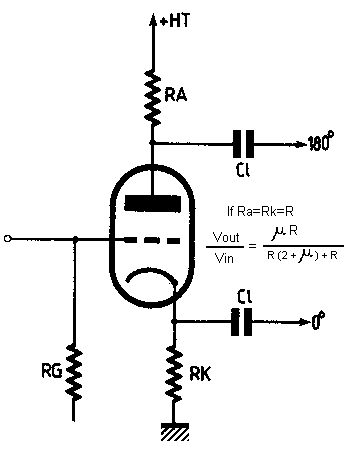
This is also a common phase splitter. It is also called "cathode coupled".
Examples at EL84 amp or EL34 amp.
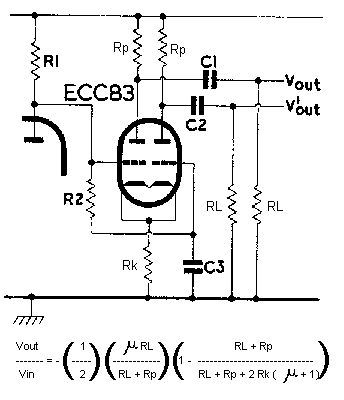
Two triodes are mounted in a differential. The grid of the second tube is decoupled to
the ground through a capacitor.
Examples at KT66 amps or 6550 amps.
Pros:
- Very linear
- Easy to adjust and stable
- Low distortion
- Can be directly connected to the previous stage
Cons:
- Quality of the grid decoupling capacitor critical
- Medium gain
- The tubes must be paired and from a twin tube
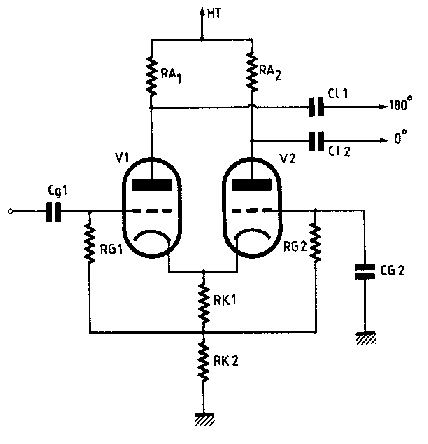
Also known as Van Scoyoc. It needs a low output impedance from the previous stage,
that's the reason for the transformer in this schematic.
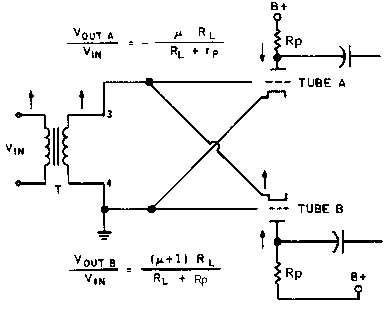
Practically, a transformer is usually substituted by two cathode followers.
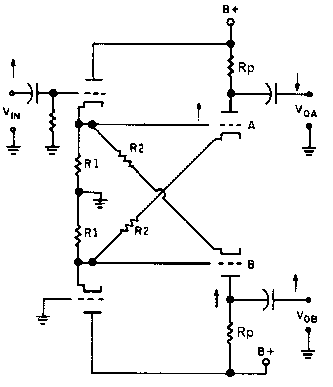
This phase-splitter is also called "anode follower" or "see-saw".
This splitter takes the signal out of the 1st tube, passes it through a voltage divider
and injects it into another tube to obtain the inversed signal.
The second schematic is a simplified version that can be used when the following tubes
have no grid current.
Example at 6V6GT amp.

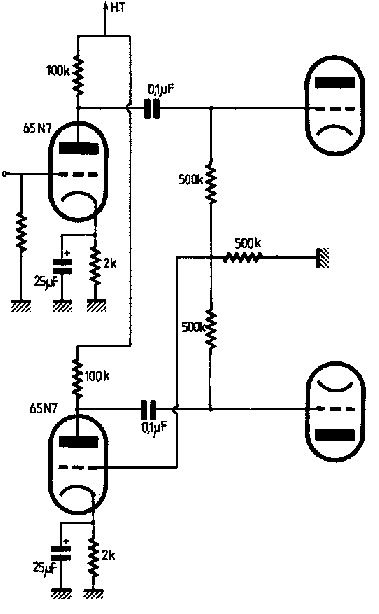
Schematic by E. F. Worthen (August 1958).
Example at EL34 amp.
Pros:
- Very linear
- Easy to adjust and stable
- Low distortion
- High gain
- Direct coupled
- High amplitude output
- Low output impedance
Cons:
- The tubes must be paired from a twin tube
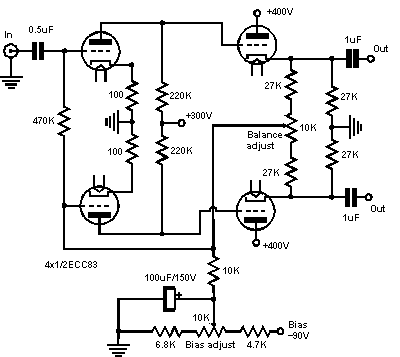
The schematic is self-explanatory, each output connection of the transformer has the
same signal but in phase opposition.
Example at 6AS7 amp.
Pros
Cons
- Quality extremely dependent of the transformer
- Not always easy to find interstage transformers nowadays










